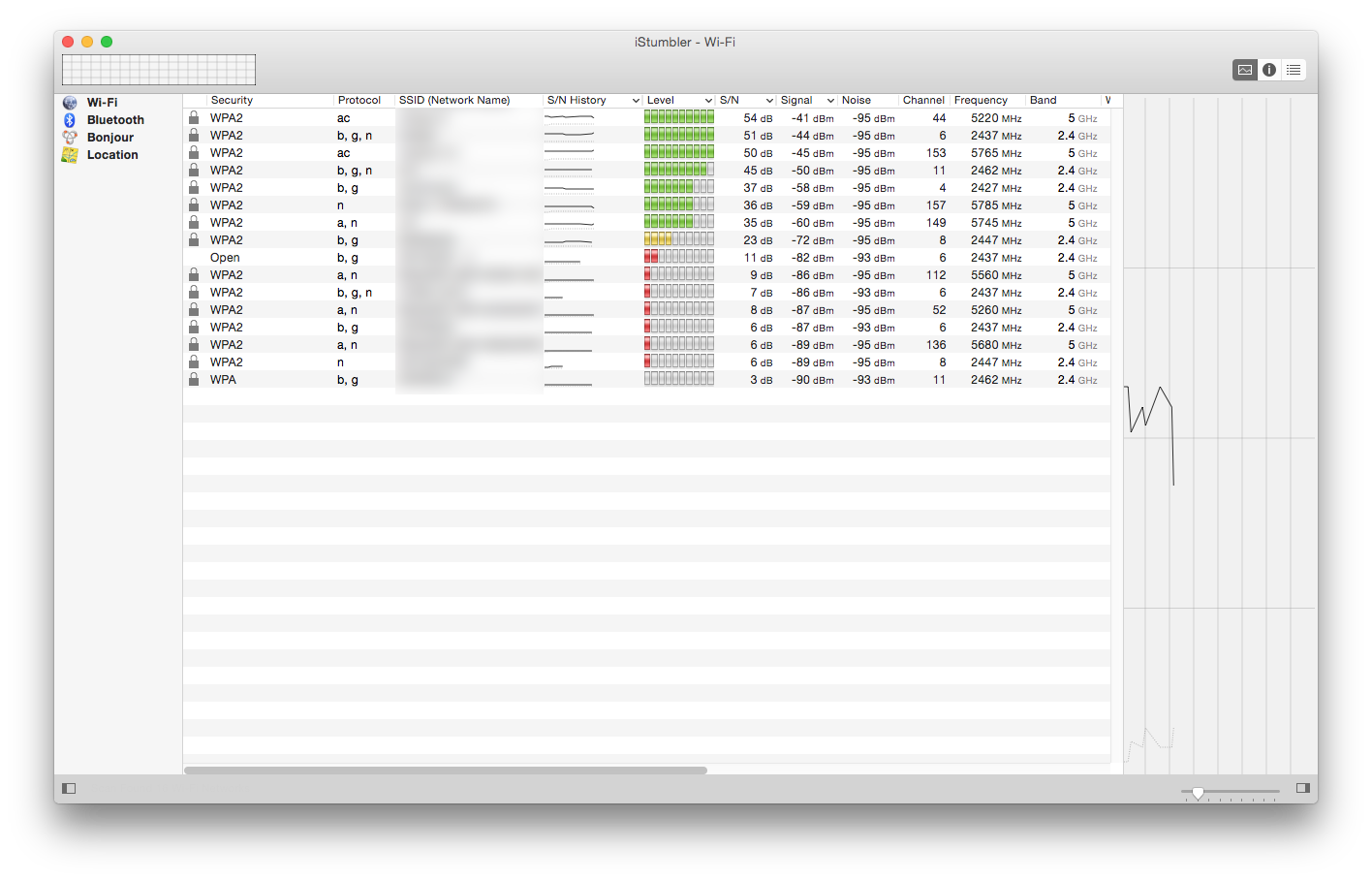| Version 2 (modified by chunter, 10 years ago) (diff) |
|---|
Best Practices when using the Design
Mitigating the Effects of Distant Interferers
One of the key challenges in running over-the-air experiments is accounting for uncontrolled external interference. While there is no single method for keeping unintended interference from polluting research results, there are a number of techniques that help mitigate harmful effects.
- The MAX2829 transceiver can be tuned to a variety of different center frequencies in the 2.4GHz and 5GHz bands. Before constructing your over-the-air experiment, it is a good idea to scan for Wi-Fi networks around your setup. There are many freely available tools for determining which channels are being used and how powerful the networks using those channels.

|
| Example Wi-Fi Channel Scan |
The above figure shows an example of what you might see after this scan. Given the occupied channels and their relative powers, we can see that 2.4GHz Channel 1 might be a good selection for a channel to run an experiment in.
Using the IBSS project as a Monitor and Packet injector
Attachments (1)
- channel_scan.png (208.2 KB) - added by chunter 10 years ago.
Download all attachments as: .zip